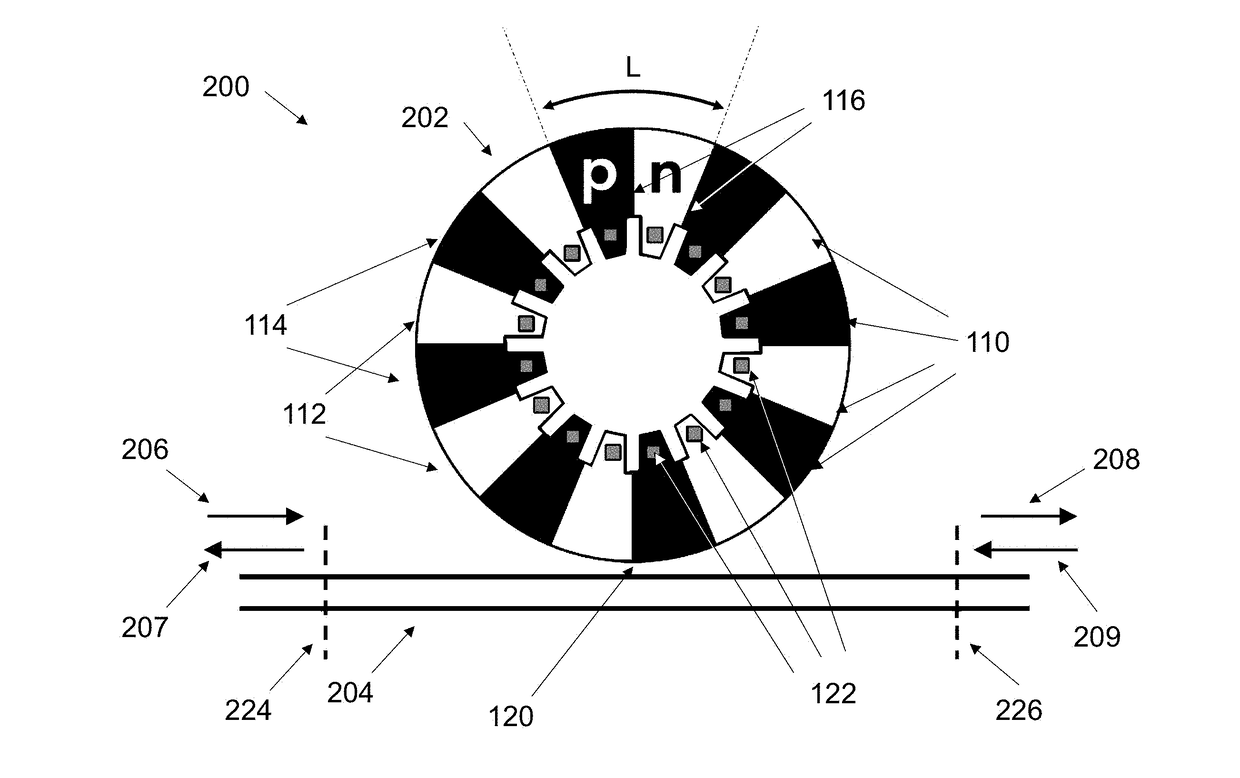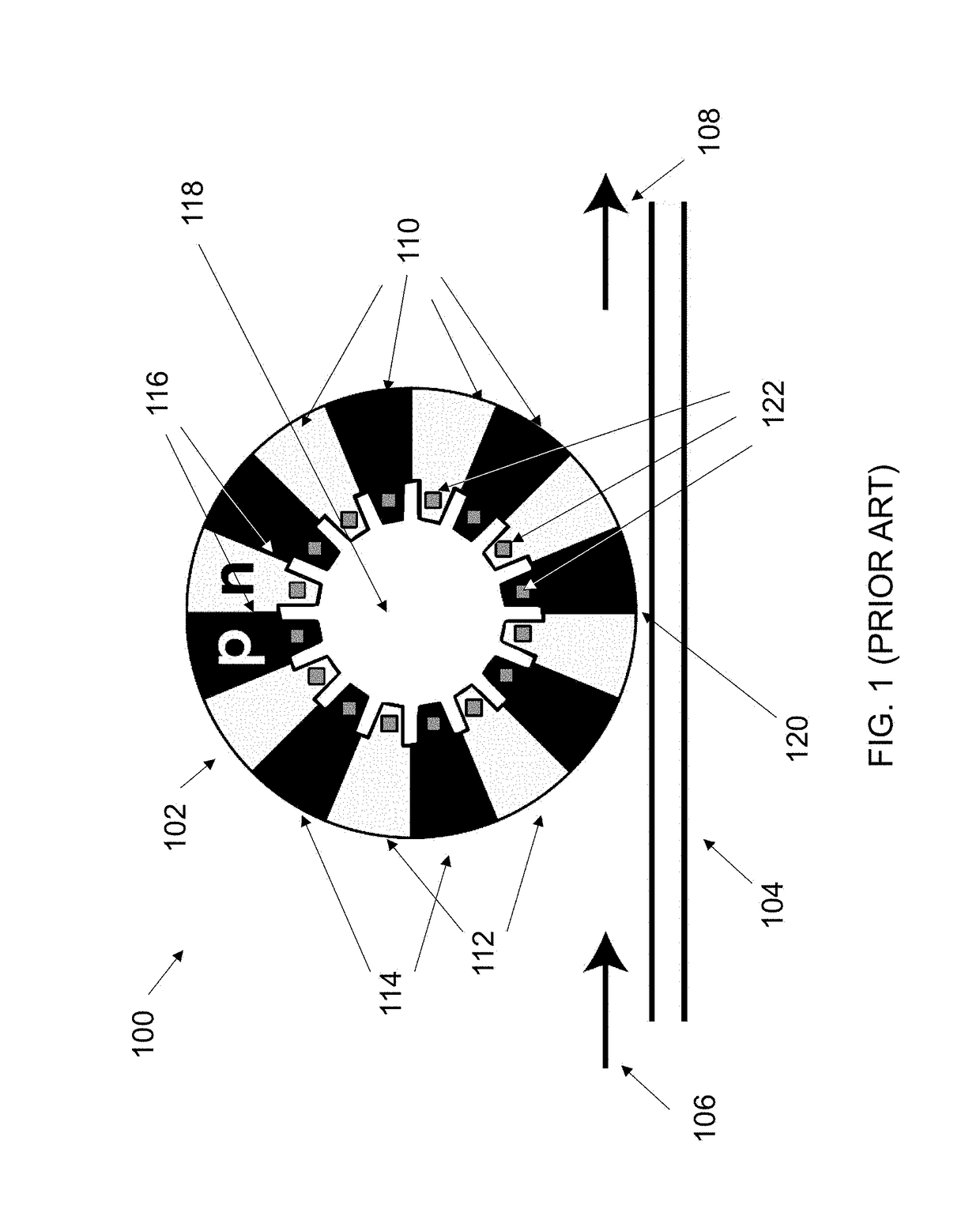CMOS Compatible Optical Modulators
a technology of optical modulators and compatible optical modules, applied in non-linear optics, instruments, optics, etc., can solve the problems of reducing the drive voltage/energy efficiency, the limit of the optical linewidth of the resonant modulator, and the inability to permit 2-level structures within commercial cmos foundries, etc., to achieve maximum modulation, minimize optical loss, and enhance modulation
- Summary
- Abstract
- Description
- Claims
- Application Information
AI Technical Summary
Benefits of technology
Problems solved by technology
Method used
Image
Examples
Embodiment Construction
[0033]Various embodiments of the present invention provide different photonic design implementations of a traveling wave resonant cavity and modifications thereof which exploit full or partial standing wave modes. The cavity might have a larger refractive index for the core than the surrounding cladding to achieve strong confinement. The resonant cavity can be made of any semiconductor material which provides the possibility of changing locally its complex (real and imaginary) refractive index, e.g. by modifying the carriers concentration (free carriers plasma effect) or by applying an electric field (Franz-Keldysh effect). While the presented designs are particularly advantageous for lossy phase modulation mechanisms, such as carrier plasma effect, by allowing both enhancement of phase modulation and minimization of loss, it is also of use for loss-only or phase only modulation mechanisms. For the latter, placing the phase mechanism (e.g. electro-optic polymer modulation) into fiel...
PUM
 Login to View More
Login to View More Abstract
Description
Claims
Application Information
 Login to View More
Login to View More - R&D
- Intellectual Property
- Life Sciences
- Materials
- Tech Scout
- Unparalleled Data Quality
- Higher Quality Content
- 60% Fewer Hallucinations
Browse by: Latest US Patents, China's latest patents, Technical Efficacy Thesaurus, Application Domain, Technology Topic, Popular Technical Reports.
© 2025 PatSnap. All rights reserved.Legal|Privacy policy|Modern Slavery Act Transparency Statement|Sitemap|About US| Contact US: help@patsnap.com



